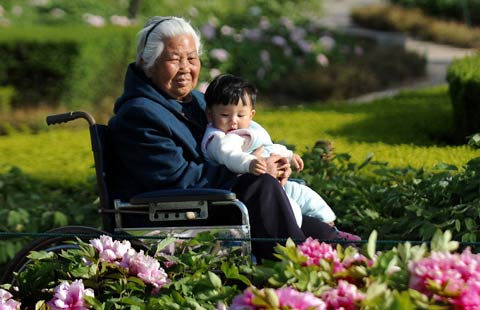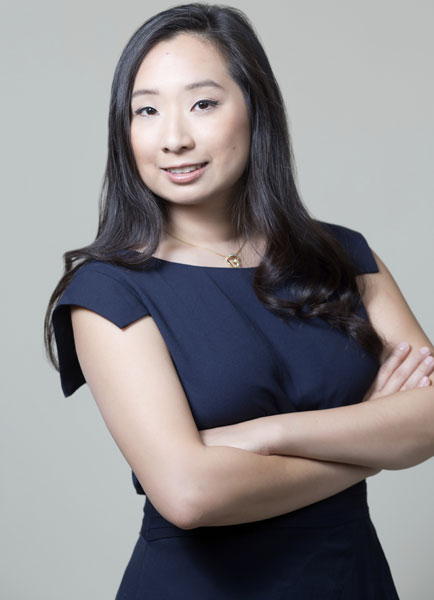Learning about 'Americanness' from Chinese-American vets
Updated: 2014-12-23 10:01
By AMY HE in New York(China Daily USA)
|
|||||||||||
For an immigration project she had to do in the third grade, Victoria Moy decided to interview her grandfather, who had served in the 407th Air Service Squadron of the Flying Tigers during World War II.
He was among about 1,000 Chinese who were sent to the China-Burma-India region, working as an airplane mechanic. Moy's grandfather traveled everywhere as part of the squadron - to Africa, India, the Himalayas - and spent a quite a bit of time in China.
When she interviewed him, she asked about a time when he first felt like an American and when the happiest time of his life was, and he said, "'In the army, with the boys.'"
Moy's grandfather died when she was 13, but as a young girl, Moy accompanied him to parties in New York's Chinatown held by the American Legion, the largest veteran organization in America, which had posts, or clubs, in Chinatown after Chinese Americans returned from World War II.
"He took me to these huge Christmas and Thanksgiving parties, and I was so surprised going and seeing my classmates and their grandparents," Moy said. "That was something that made me think, 'Wow, a lot of people who have grandparents who were part of World War II!'"
Later in her mid-20s, Moy worked as a journalist for a radio station in Chinatown and came across even more Chinese-American soldiers and veterans, and so she started interviewing some of them.
One story led to another and one interview eventually became 70, 40 of which Moy compiled into a book called Fighting For the Dream: Voices of Chinese American Veterans from World War II to Afghanistan, published in November.
"In the WWII period, Chinese were mostly relegated to working in laundries and restaurants, not out of choice. There was the Yellow Peril, and those were the jobs that were left for Chinese Americans," she said.
In New York City back then, nearly 40 percent of Chinese Americans participated in the war, either it was because they were drafted or enlisted, according to Moy.
"It's just incredible the number of Chinese Americans who served, up to 20,000 or a third of the entire Chinese-American population was in the military at the time. A lot of them were drafted. The gender ratio was really skewed then, it was about one woman to every five men, or one woman to every eight men, and that's because of the Chinese Exclusion Act," she said.
"I think a lot of people did enlist and a lot of people were not directly promised, but insinuated that you will definitely be considered a citizen if you served for our country. There were hints of that with recruiters. A lot of people had come here through the Paper Sons system because the Exclusion Act made it so difficult. A lot of people saw this as an opportunity to serve for their country," said Moy.
One interview Moy did was with veteran Lester Fong, who came from China at the age of 15 and was not content that he could only find work either in laundromats or Chinese restaurants. He ended up working at a sportswear factory, learning the skills of the trade and eventually opening his own factory where he then began making military uniforms for the US Army.
Fong was drafted into the army and sent to Guam, where he witnessed kamikazes. He barely spoke English at the time and the ordeal was frightening to him, Moy recalled.
Another soldier Moy talked to is closer to her in age, someone she had come across while covering an American Legion parade.
"What surprised me in my mid-20s was seeing people coming back from Iraq who were my own age. It was something I didn't really understand. Why would someone from my community choose to go?" she said.
Pakee Fang was in his mid-20s when he met Moy, someone who had immigrated to Chinatown at the age of 10. His family was struggling in America, and his living situation was stressful, Moy said. Fang didn't do very well in school and so joining the military was his way out.
"He said that the first time he went to boot camp was the first time he left Chinatown since he came and it was the first time he realized that he didn't speak English very well, and that he had been speaking Chinglish all along. That was a huge culture shock for him," Moy said.
The military was a great experience for him in the end, and because of all the poverty and hardship Fang saw through his time in the military, he decided not to take anything for granted, she said, and became a 4.0 student after that.
"His life changed. He had a lot more appreciation," she said.
Interviewing Chinese-American veterans and soldiers was an exercise in learning about Chinese-American identity from people who had vastly different life experiences, Moy said.
"Sometimes when I hear these stories, I don't think that our nation went through a linear progression in terms of advancement. I think each generation we go through, we do experience a lot of the same things over and over again, not in a bad way, but it's a reality," she said.
"I think people like to think that people used to be racist and that people are open-minded now. It's not like that. It's much more complicated and I think every generation deals with the ideal of 'Americanness' in different ways. Throughout different generations, I guess you have Chinese Americans who have negotiated being both American and Chinese."
amyhe@chinadailyusa.com
Related Stories
Flying Tiger veterans saluted 2014-10-27 11:27
Role of Kuomintang veterans recognized 2014-10-01 07:58
Veterans return to Normandy beach with heavy hearts 2014-06-07 07:20
Today's Top News
Pyongyang denies cyberattack on Sony
Nation to become net capital exporter
Beijing willing to assist Moscow
Australian PM denies cabinet reshuffle sign of desperation
Obama vows again to close Guantanamo prison
China revises 2013 GDP up by 3.4%
China-US economic talks conclude with fruitful outcomes
Ties between China and Oceanian countries enter new era
Hot Topics
Lunar probe , China growth forecasts, Emission rules get tougher, China seen through 'colored lens', International board,
Editor's Picks

|

|

|

|

|

|






